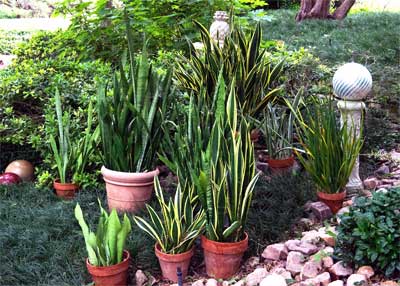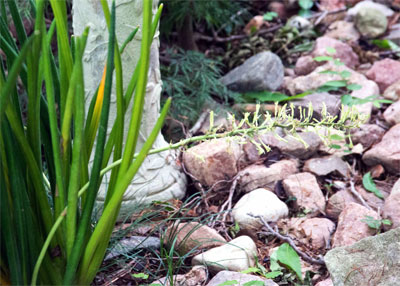From the Sperry Gardens

Back in the ’80s, I fell in love with haworthias. I started collecting them, and my numbers grew to more than 400 species and varieties. (But I’m NOT obsessive!) I still have them, and they’ve just gotten fuller and prettier. You’ve seen them here before.
It was a short step to the scores of types of aloes, and I grew that collection to probably 50 or more species. I stayed with the smaller types, since some aloes can reach tree-like proportions. Aloes have lovely flower spikes.
And so then it was a very short hop over to the sansevierias, and they become my focus here now. Honestly, I knew there were 8 or 10 species from the genus Sansevieria. Known variously as snake plants and mother-in-law’s tongue, those were the ones I had seen in nurseries and greenhouses. They were the common ones. But, oh my goodness, when I started looking at cactus and succulent society plant sales and specialty growers, I found that there are a hundred or more types. I’m really not sure where the list stops.
Some of my older sansevierias were sold to me with plant research numbers. They were the results of studies by the federal government during World War II, research that was seeking a source of fiber. It didn’t matter to the research scientists if the plants were pretty or not — it was all about the fiber. However, some plant collector must have been nearby, because several of those old hybrids that weren’t very fibrous turned out to be beautiful, and they were saved from the compost pile.
I continued my sansevieria search when I signed up with eBay in 1999, and I’ve found several prized types there in the ensuing years. Plus, my old plants have popped their pots — I have sansevierias just about everywhere.
So it was time to bring them out into the shaded garden again. I’m fond of their dramatic growth forms. I like their variegation in shades of gray, yellow and white, and I’m fond of their low-maintenance attitude. These plants have a will to live. They’re some of the lowest-care tropical plants that you’ll find for your home.

Finally, one little added bonus. Several types produce flower stalks each year. When I stepped out of my pickup and onto our driveway yesterday afternoon, it hit me. That super-sweet fragrance of sansevieria flowers. One of the two floral stems that I smelled is leaning out on the right side of the right-most plant in my photo. The flowers aren’t much to look at, but they’re sensational to smell.

